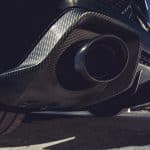For car enthusiasts, the BMW Z4 is a highly appreciated sports car, delivering strong performance, elegant design, and a smooth ride. However, to enhance your BMW Z4’s overall performance and ensure an optimal driving experience, a well-balanced suspension setup is crucial.
In this comprehensive guide, we will delve into the specifics of how to choose the right suspension setup for a BMW Z4 to enhance its ride and handling. Remember, the quality of a car’s suspension system can drastically impact its drivability, handling, and comfort.
En parallèle : Can the Installation of a Rear Diffuser Improve the Aerodynamic Efficiency of an Audi R8?
Understanding the Importance of the Suspension System
Before we delve into the specifics of choosing the right suspension setup, let’s understand the importance of a car’s suspension system. It’s the complex system of springs, shock absorbers, and linkages connecting a vehicle to its wheels and allowing relative motion between the two. It’s crucial for the car’s stability and the comfort of the passengers.
When the suspension system is in top condition, it provides a smooth ride and keeps the vehicle’s tires in constant contact with the road, which is essential for safe steering and braking. A well-balanced suspension setup ensures that the weight of the car is evenly distributed across all four wheels when you’re taking a corner, accelerating or braking.
A lire également : How to Optimize the Airflow in a Chevrolet Silverado with a Custom Hood and Vent System?
Choosing Between Coilovers and Stock Springs
When it comes to BMW Z4 suspensions, there’s an ongoing debate between coilovers and stock springs. Both have their merits and demerits, and your choice will depend on your specific needs and preferences.
Coilovers are highly adjustable, allowing you to tailor the car’s height, ride quality, and handling to suit your specific needs. This makes them ideal for track use or if you want to fine-tune your car’s handling characteristics. However, they can be expensive and require more maintenance than stock springs.
On the other hand, stock springs are designed to meet the needs of average drivers. They provide a comfortable ride and decent handling but don’t offer the same level of adjustability as coilovers. If you’re not looking to heavily modify your car’s handling characteristics, stock springs could be a suitable choice.
Evaluating Front and Rear Suspension
When configuring your BMW Z4’s suspension, it’s important to evaluate both the front and rear suspension. This ensures a balanced ride and handling.
The front suspension impacts the car’s steering and stability. A stiff front suspension can improve the car’s response to steering input but could potentially make the ride less comfortable. On the other hand, a softer front suspension offers a smoother ride but could result in decreased steering response.
The rear suspension affects the car’s traction and stability during acceleration and braking. A stiffer rear suspension can improve the car’s stability during acceleration but could make the ride less comfortable. Conversely, a softer rear suspension provides a smoother ride but might reduce the car’s stability during acceleration.
Consulting an iTrader Representative
Before you finalize your suspension setup, consider consulting an iTrader representative. They can provide expert advice based on your specific needs and preferences. Moreover, they might be able to suggest suspension setups that you hadn’t considered.
To consult an iTrader rep, you can join the iTrader platform and post your questions or concerns. The reps and other users can then respond to your posts, offering advice, suggestions, and feedback.
Making Use of Apps to Track Your Car’s Performance
In this digital age, there are numerous apps available that can help you track your car’s performance. These apps can provide valuable data that you can use to fine-tune your car’s suspension setup.
For example, some apps can track the car’s speed, acceleration, braking, and cornering forces. This data can help you identify areas where your car’s performance could be improved. You can then adjust your car’s suspension setup accordingly to ensure a balanced ride and optimal handling.
In conclusion, choosing the right suspension setup for your BMW Z4 involves understanding the importance of the suspension system, choosing between coilovers and stock springs, evaluating both the front and rear suspension, consulting an iTrader representative, and making use of apps to track your car’s performance. By considering all these aspects, you can ensure a balanced ride and optimal handling for your BMW Z4.
The Impact of Ride Height and Spring Rates on Your BMW Z4
Diving deeper into the world of car modifications, it’s essential to consider the ride height and spring rates of your BMW Z4. The ride height and spring rate can significantly impact your car’s performance and overall ride quality.
Ride height, in simple terms, is the distance between the base of your car and the road. Altering the ride height can change the car’s center of gravity, which can affect the car’s handling. A lower ride height can improve your car’s handling, but it can also make your car more susceptible to speed bumps and other road imperfections.
Spring rates, on the other hand, refer to the stiffness of your car’s springs. Spring rates can affect both the comfort and handling of your car. A higher spring rate (stiffer springs) can improve your car’s handling and stability but could result in a harsher ride. Conversely, a lower spring rate (softer springs) can provide a smoother ride but might lead to increased body roll and decreased handling.
It’s crucial to strike a balance between the ride height and spring rate to ensure optimal ride quality. You might need to experiment with different combinations of ride height and spring rates to find the setup that best suits your specific driving habits and preferences.
Importance of Sway Bars in Your Suspension Setup
The unsung heroes of any car’s suspension system are the sway bars. They are fundamental for maintaining equilibrium and providing stability when the car is driven around corners or over uneven terrain.
Also known as anti-roll bars, sway bars are metal rods that connect the front and rear suspension system. When a car goes around a corner, the sway bar distributes the force of the turn across both sides of the car, reducing body roll and improving overall stability.
If you frequently drive your BMW Z4 on winding roads, or if you use it for track days, you might want to consider upgrading your sway bars. Higher-performance sway bars can provide better cornering and handling, enhancing your overall driving experience. However, be aware that stiffer sway bars could potentially make your ride less comfortable on straight roads or over bumps.
Remember, like any other component of your car’s suspension system, sway bars should be selected and adjusted carefully based on your specific needs and preferences.
Conclusion
Achieving a balanced ride and optimal handling in your BMW Z4 involves a deep understanding of the car’s suspension system and careful consideration of various factors. It’s not just about choosing between coilovers and stock springs; it’s also about understanding the importance of ride height and spring rates, and the role of sway bars.
You might find it beneficial to consult an iTrader representative, join the iTrader platform, and study the posts from other BMW drivers. These posts can give you insights into their experiences and preferences, helping you make informed decisions.
Moreover, making use of available apps to track your car’s performance can provide valuable data to fine-tune your suspension setup. Remember, every car and every driver is unique, so there’s no one-size-fits-all solution. It’s all about finding the setup that best suits your specific needs and preferences, ensuring a smooth and predictable ride.
In the end, the goal is to appreciate the ride and handling of your BMW Z4, and to enjoy every drive, whether it’s a daily commute or an exciting track day. Happy driving!











